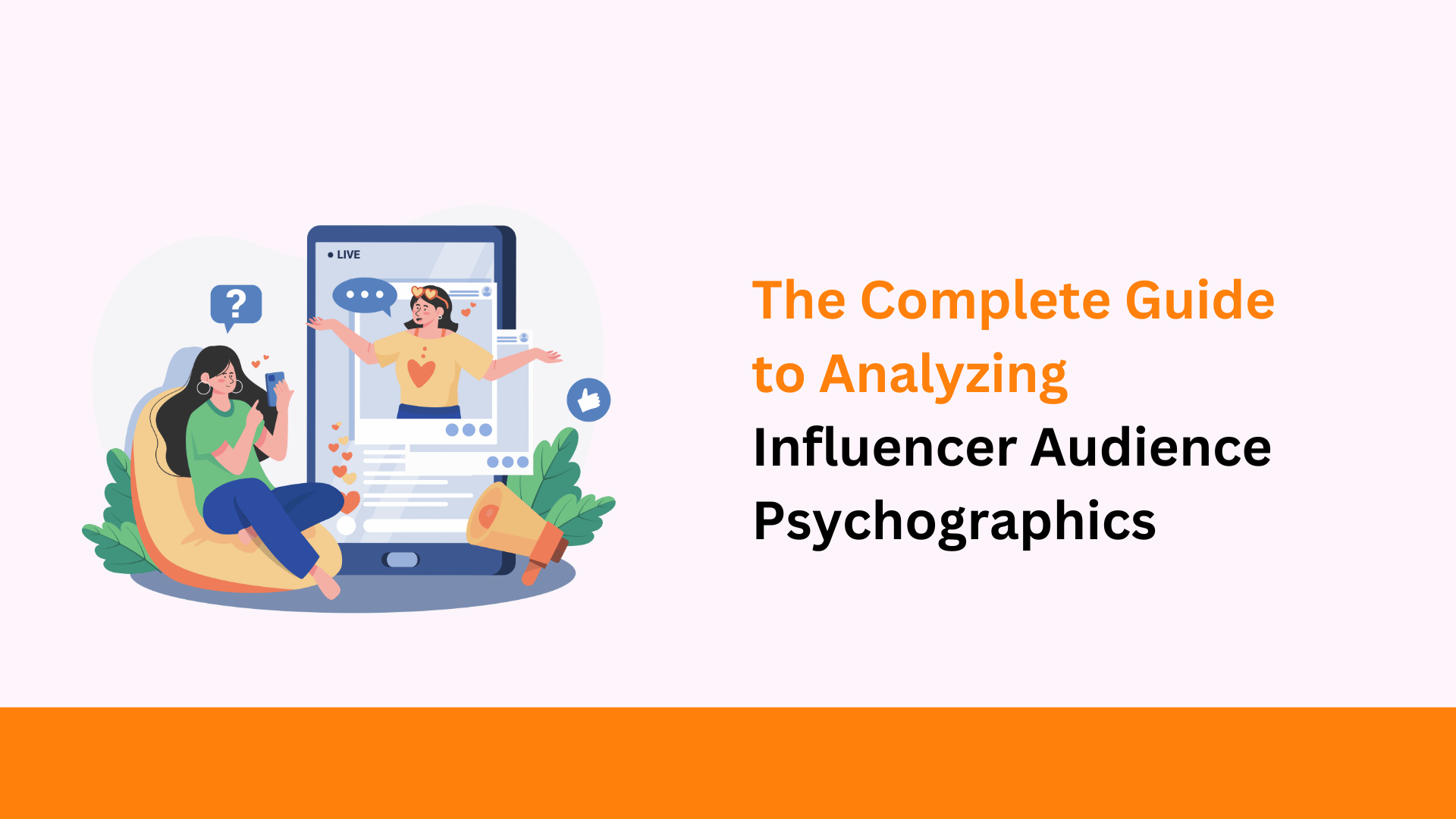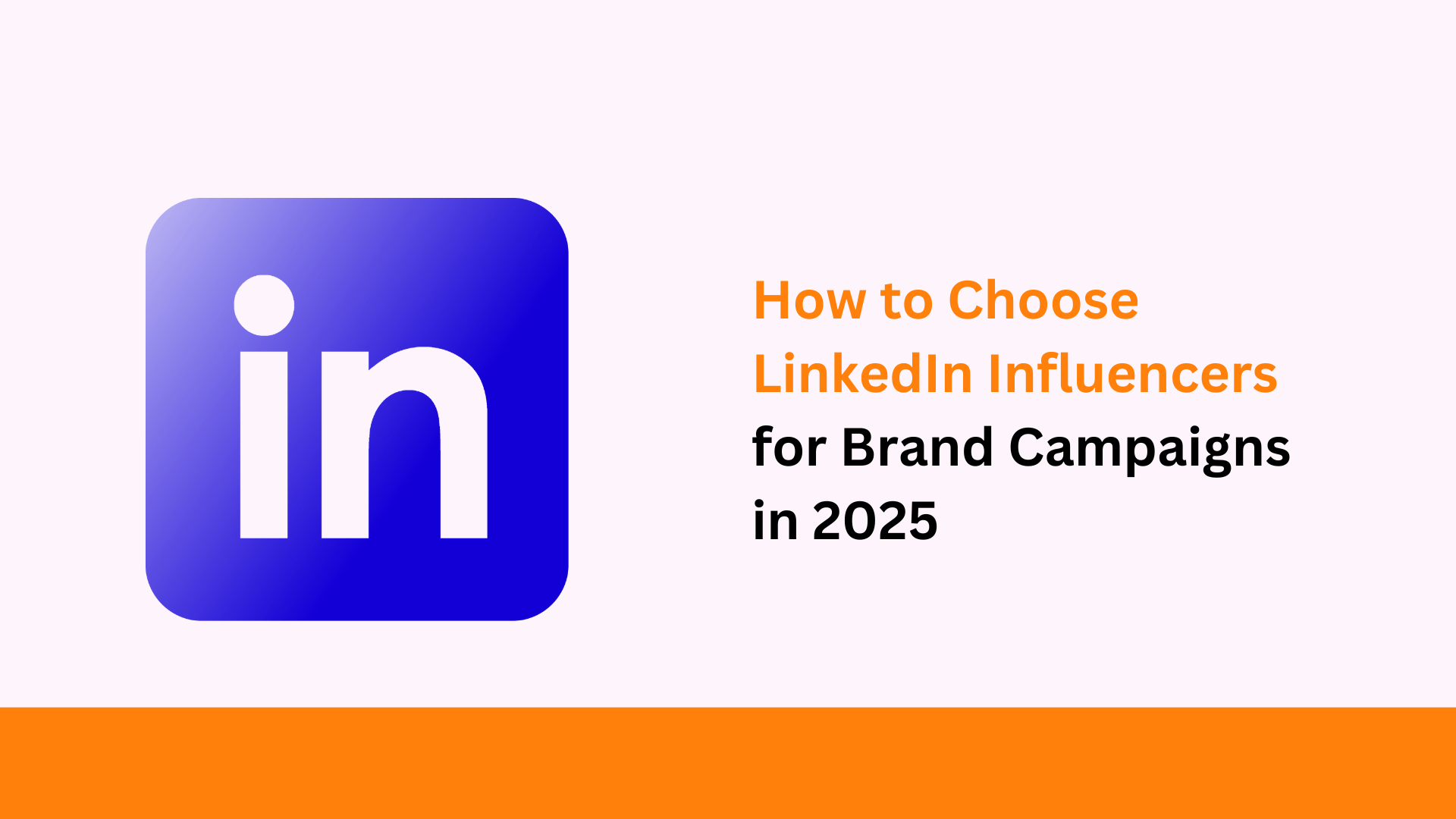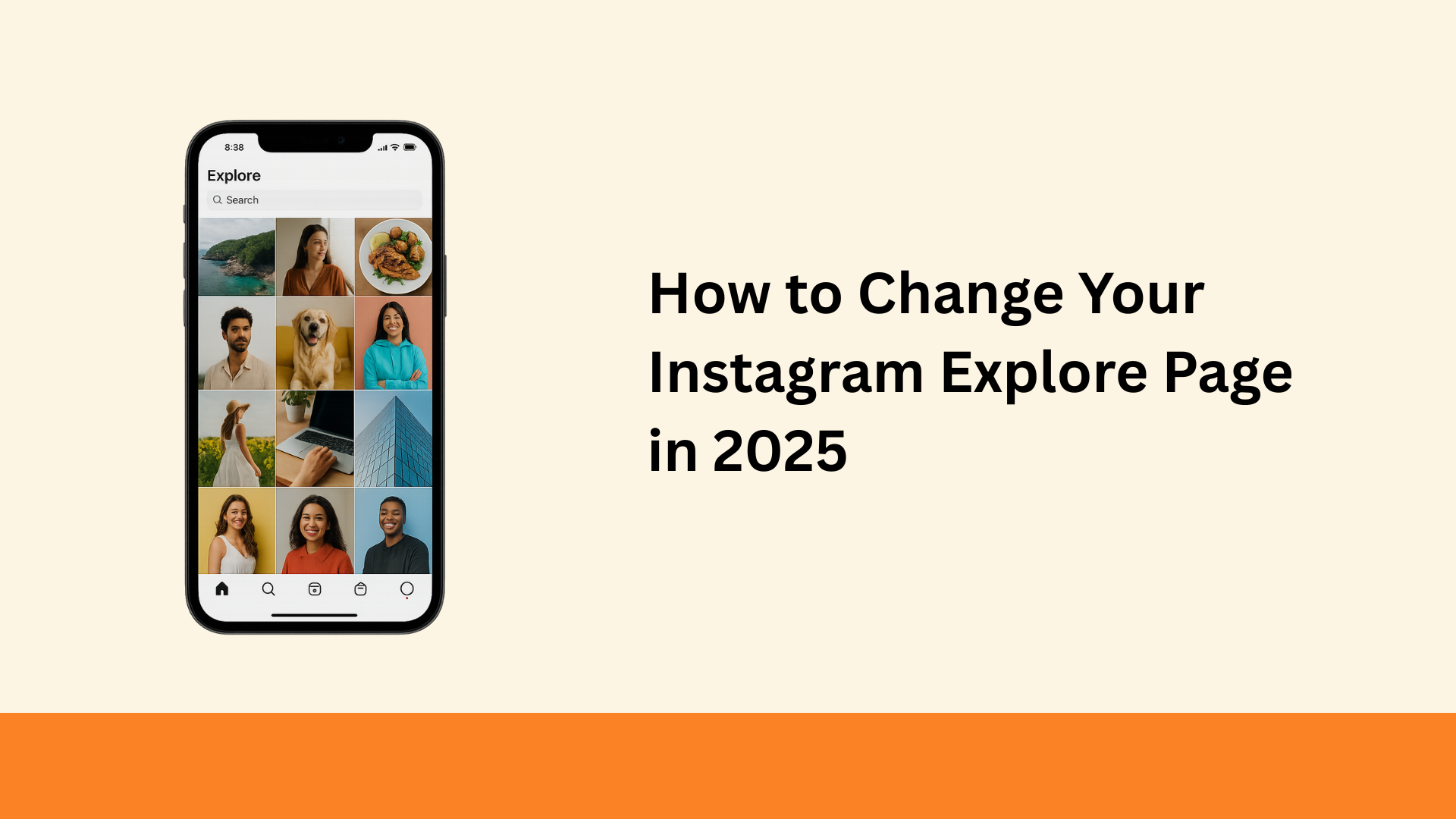TL;DR
- Psychographics tells the why behind user behavior, going beyond basic demographics to understand values, interests, and motivations.
- Indian audiences show distinct psychographic patterns based on regional values, aspirations, and cultural nuances.
- Key analysis areas are lifestyle choices, purchasing triggers, content consumption habits, and value alignment.
- Social listening, engagement analysis, and AI-powered insights help decode audience psychology.
- Matching psychographics to brand strategy increases campaign effectiveness and ROI.
- Look for authentic engagement patterns rather than follower count alone.
Understanding your target audience goes far beyond knowing their age, gender, and location. In India’s diverse influencer marketing landscape, psychographics have become the secret weapon for brands seeking genuine connections with their audience.
While demographics tell you who your audience is, psychographics reveal why they engage with content, what drives their purchasing decisions, and how they align with your brand values. This comprehensive guide explores how to analyze influencer audience psychographics effectively in the Indian market.
What is influencer audience psychographics?
Influencer audience psychographics encompass an influencer’s followers’ emotional, psychological, and lifestyle dimensions. Unlike demographics, which provide basic statistical information, psychographics dive into the deeper motivations that drive human behavior.
In the Indian context, psychographics become even more crucial due to the country’s cultural diversity. A 25-year-old software engineer in Bangalore may have completely different values and interests compared to a 25-year-old teacher in Varanasi, despite sharing similar demographic profiles.
These psychological insights help marketers understand what content resonates and why it resonates. For instance, when beauty influencer Komal Pandey collaborates with sustainable fashion brands, her audience targeting basics include environmentally conscious millennials who value both style and sustainability.
Psychographics bridge the gap between surface-level data and meaningful engagement. They reveal whether followers engage with content because they’re genuinely interested in the topic or simply attracted to giveaways and freebies.
Why Psychographics Matter in Influencer Marketing
The Indian influencer marketing industry, valued at over ₹5500 crores in 2024, has evolved beyond vanity metrics. Brands now prioritize authentic engagement over follower count, making psychographic analysis essential for campaign success.
Consider fitness influencer Shilpa Shetty’s audience. While demographic data shows a predominantly female following aged 25-45, psychographic analysis reveals two distinct segments: working mothers seeking practical wellness tips and young professionals interested in luxury fitness experiences. This insight allows brands to tailor messaging accordingly.
Psychographic alignment creates deeper emotional connections. When tech reviewer Technical Guruji discusses budget smartphones, his audience comprises value-conscious tech enthusiasts who prioritize functionality over status symbols. Brands targeting this segment with premium devices often see poor conversion rates despite high engagement.
Regional psychographics also play a vital role. Southern Indian audiences may respond differently to lifestyle content compared to audiences in North India, reflecting varying cultural values and aspirations. Understanding these nuances helps in campaign planning for different audience types and ensures cultural sensitivity in brand messaging.
Key Psychographic Traits to Analyze
- Interests and Hobbies
Start by analyzing what content types generate consistent engagement. Indian audiences show distinct interest patterns based on regional preferences and cultural backgrounds. Tech-savvy Bangalore audiences engage heavily with innovation content, while Mumbai followers gravitate toward entertainment and lifestyle topics.
Use Instagram Insights and YouTube Analytics to identify trending hashtags and topics within an influencer’s community. Look beyond obvious categories to uncover niche interests that drive engagement.
- Values and Beliefs
Indian influencer audiences often align with specific value systems that influence their purchasing decisions. Environmental consciousness, family values, women’s empowerment, and social responsibility are key drivers in the Indian market.
Analyze how audiences respond to value-driven content. Sustainable fashion influencer Masoom Minawala’s followers actively engage with eco-friendly brand partnerships, indicating strong environmental values. Comment sentiment analysis reveals authentic support versus superficial agreement.
- Lifestyle Indicators
The urban versus rural divide significantly impacts lifestyle psychographics in India. Metro audiences may prioritize convenience and premium experiences, while tier-2 and tier-3 city audiences focus on value and practicality.
Work culture also shapes psychographics. The growing remote work culture has created new lifestyle segments interested in home organization, productivity tools, and work-life balance content. These insights inform product positioning and messaging strategies.
| Psychographic Trait | Urban Audience | Tier-2/3 Cities |
| Shopping Behavior | Premium brands, convenience | Value for money, durability |
| Content Preference | Aspirational lifestyle | Practical tutorials |
| Engagement Pattern | Quick interactions | Detailed discussions |
| Brand Loyalty | Trend-driven | Quality-focused |
Tools and Techniques to Analyze Psychographics
Modern psychographic analysis combines quantitative tools with qualitative research methods. Social listening platforms like Sprout Social and Hootsuite provide sentiment analysis and interest clustering for Indian audiences.
Manual analysis remains equally important. Review comment sections, Instagram Story reactions, and YouTube community posts to understand audience motivations. Indian audiences often express opinions more candidly in comments, providing rich psychographic insights.
AI-powered tools increasingly offer advanced psychographic analysis. Platforms like Qoruz and HypeAuditor provide interest tags and personality insights specific to Indian influencer audiences. These tools analyze language patterns and engagement behaviors to create detailed psychological profiles.
Content consumption patterns reveal lifestyle preferences. Audiences that save recipe videos likely prioritize home cooking and family time, while those sharing fashion reels value personal expression and social validation. Cross-platform analysis provides comprehensive psychographic pictures.
For deeper insights into evolving audience behaviors, explore psychographic trends in influencer marketing and how they’re shaping campaign strategies across different sectors.
How to Match Psychographics to Brand Strategy
- Persona Matching in Practice
Create detailed buyer personas that incorporate both demographic and psychographic data. Map these personas to influencer audiences showing similar psychological traits. This ensures authentic brand-audience alignment.
For example, a premium skincare brand targeting successful professional women should partner with influencers whose audiences value self-care, career advancement, and premium experiences. Lifestyle influencer Dolly Singh’s audience exhibits these exact psychographic traits, making her partnerships with luxury brands highly effective.
- Layering Demographics with Psychographics
Combine traditional demographic data with psychographic insights for precise targeting. A female audience aged 25-34 in Mumbai interested in sustainable living represents a specific psychographic segment worth premium pricing for eco-friendly brands.
This layered approach helps justify influencer fees and optimize campaign budgets. Brands can confidently invest more in influencers whose audiences show strong psychographic alignment with their target consumers.
Consider regional variations when layering data. Delhi audiences interested in fashion may prefer bold, statement pieces, while Chennai audiences might gravitate toward traditional fusion styles. These cultural psychographics significantly impact campaign performance.
Red Flags in Audience Psychographics
Identifying problematic psychographic patterns protects campaign investments. Audiences driven primarily by giveaways and contests show low purchase intent and poor brand loyalty. These followers typically disengage once promotional content ends.
Overly broad psychographic profiles indicate unfocused audiences that dilute campaign messaging. Influencers covering too many unrelated topics often attract diverse followers without shared interests or values, reducing conversion potential.
Watch for disconnects between influencer persona and audience psychographics. If a luxury lifestyle influencer’s audience shows budget-conscious behaviors, brand partnerships may fail to generate expected results. Authentic alignment between the creator and the community ensures campaign authenticity.
Measuring Psychographic Campaign Success
Track engagement quality metrics beyond likes and shares. Comments expressing genuine interest, save indicating future purchase intent, and story shares showing personal connection provide better psychographic alignment indicators.
Conversion tracking becomes crucial for psychographic campaigns. Monitor not just click-through rates but actual purchase behavior and customer lifetime value. Psychographically aligned audiences typically show higher retention and advocacy rates.
Post-campaign surveys can validate psychographic assumptions. Ask customers how they discovered your brand and what influenced their purchase decision. This feedback refines future influencer selection and psychographic targeting strategies.
In Conclusion
Analyzing influencer audience psychographics transforms how brands connect with Indian consumers. By understanding the psychological drivers behind audience behavior, marketers create more authentic, effective campaigns that resonate on emotional levels. Success lies not in reaching the most people, but in reaching the right people with the right message.
Remember, psychographic analysis is an ongoing process. As Indian consumer behaviors evolve with changing lifestyles and values, continuous monitoring ensures your influencer partnerships remain aligned with audience motivations and drive meaningful business results.
FAQs
- What exactly are influencer audience psychographics?
Psychographics are the psychological characteristics of an audience, including their values, interests, lifestyles, motivations, and personality traits. Unlike demographics that tell you who follows an influencer, psychographics explain why they follow and what drives their behavior.
- How do psychographics differ from demographics in influencer marketing?
Demographics cover basic statistical information like age, gender, and location, while psychographics explore emotional and behavioral patterns. For effective campaigns, brands need both demographics for initial targeting and psychographics for message resonance.
- Which tools help analyze audience psychographics effectively?
Social listening platforms, native social media analytics, AI-powered tools like Qoruz and HypeAuditor, and manual analysis of comments and engagement patterns. Combining multiple methods provides comprehensive psychographic insights.
- Can psychographic analysis improve campaign ROI?
Absolutely. Psychographic alignment leads to higher engagement rates, better conversion rates, and stronger brand-audience connections. Campaigns targeting psychographically matched audiences typically see 20-40% better performance compared to demographic-only targeting.
- How often should brands analyze influencer audience psychographics?
Quarterly analysis works for most brands, with monthly checks during active campaigns. Audience psychographics can shift based on trends, seasonal changes, and cultural events, especially in diverse markets like India.



